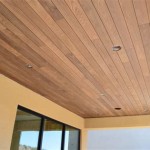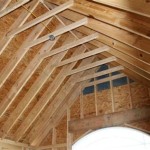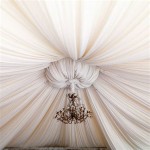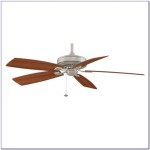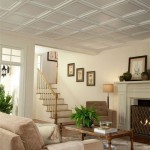Best Ceiling Fans for Small Living Rooms: Combining Comfort and Space Efficiency
Small living rooms present unique challenges when choosing home appliances. Space is a premium, and every item must contribute to both functionality and aesthetics without overwhelming the area. Ceiling fans are a practical choice for circulating air and providing supplemental cooling and heating, but selecting the right model for a compact space requires careful consideration. This article explores the factors to consider when choosing a ceiling fan for a small living room and highlights some of the best options available.
The primary goal is to maximize airflow while minimizing the fan's visual impact. A bulky fan can make a small room feel even smaller, whereas a sleek, well-proportioned fan can actually enhance the room's perceived size. Furthermore, the choice of finish, blade design, and lighting features can all contribute to the overall ambiance of the living room. Noise levels are also crucial, as a noisy fan can be disruptive and detract from the room's tranquility.
Several factors dictate which ceiling fan will best suit a small living room. These include the room's dimensions, ceiling height, style preferences, and lighting needs. Understanding these factors will help narrow down the options and ensure that the chosen fan is both functional and aesthetically pleasing.
Size and Blade Span Considerations
The blade span of a ceiling fan is a critical factor to consider for small living rooms. A fan that is too large will create excessive airflow, potentially causing discomfort and feeling overwhelming. Conversely, a fan that is too small will not provide adequate air circulation, defeating its purpose. For small living rooms, typically those under 100 square feet, a ceiling fan with a blade span of 42 inches or less is generally recommended. Rooms slightly larger, up to 150 square feet, may accommodate a 44-inch or 46-inch fan. These sizes strike a balance between airflow and space optimization. It’s important to note that these are general guidelines, and specific recommendations may vary based on ceiling height and the room's layout.
In addition to blade span, the height of the ceiling also dictates the appropriate fan size and mounting style. For standard 8-foot ceilings, a flush-mount or hugger-style ceiling fan is ideal. These fans are designed to sit close to the ceiling, maximizing headroom and preventing the fan from feeling intrusive. For higher ceilings, a downrod can be used to lower the fan, optimizing airflow and ensuring that the fan is positioned at the appropriate height to effectively circulate air throughout the room. The general rule of thumb is that the fan blades should be at least 7 feet from the floor for safety.
Furthermore, consider the number of blades. While the number of blades does not directly correlate with performance, it can influence the fan's aesthetic appeal. Fans with fewer blades (typically three or four) often have a more modern and minimalist look, which can be well-suited for contemporary small living rooms. Fans with more blades (five or more) may have a more traditional or ornate appearance. Ultimately, the choice depends on personal taste and the overall style of the room.
Lighting and Style Integration
In small living rooms, ceiling fans often serve a dual purpose: providing air circulation and acting as a primary light source. Therefore, selecting a fan with integrated lighting is often a practical choice. Consider the type of lighting that best suits the room's needs. Options include integrated LED fixtures, which are energy-efficient and long-lasting, and traditional light kits with incandescent or halogen bulbs. Dimmable lighting is also a valuable feature, allowing for adjustable brightness levels to create different moods and ambiance. When selecting a ceiling fan with a light kit, ensure that the light output is sufficient for the room size. Lumens are a measure of brightness, and a higher lumen output indicates a brighter light. A small living room typically requires a light fixture with a lumen output of around 800-1600 lumens, depending on the room's color scheme and the desired level of brightness.
The style of the ceiling fan should complement the overall décor of the living room. A wide variety of styles are available, ranging from modern and minimalist to traditional and ornate. For contemporary small living rooms, consider fans with sleek lines, simple designs, and brushed nickel or matte black finishes. These fans blend seamlessly into modern interiors without being visually distracting. For more traditional living rooms, fans with ornate details, carved wood blades, and antique brass or bronze finishes may be more suitable. Consider the existing furniture, wall colors, and other decorative elements in the room when choosing a ceiling fan style to ensure a cohesive and harmonious look.
Beyond the overall style, pay attention to the details of the fan's design. The blade shape, the motor housing, and the switch housing all contribute to the fan's aesthetic appeal. Curved blades tend to have a more elegant and sophisticated look, while straight blades offer a more modern and streamlined appearance. The motor housing should be discreet and unobtrusive, blending seamlessly with the ceiling. The switch housing should be easily accessible and user-friendly. Consider whether the fan has a remote control, which can be a convenient feature for adjusting the fan speed and light levels from anywhere in the room.
Performance and Noise Levels
The primary function of a ceiling fan is to circulate air, so performance is a critical consideration. Look for fans with high CFM (cubic feet per minute) ratings, which indicate the volume of air that the fan moves. A higher CFM rating generally means better airflow. However, it's important to consider the fan's energy efficiency as well. Some fans may have high CFM ratings but also consume a significant amount of energy. Look for fans with the Energy Star label, which indicates that they meet strict energy efficiency standards. These fans can help reduce energy consumption and lower utility bills.
Noise levels are another important factor, particularly in small living rooms where noise can be more noticeable. A noisy fan can be distracting and irritating, detracting from the room's tranquility. Look for fans with quiet motors and well-balanced blades. Many manufacturers specify the fan's noise level in decibels (dB). A fan with a noise level of 40 dB or less is generally considered quiet. Check online reviews and customer feedback to get a sense of the fan's actual noise level in real-world conditions.
The motor type also influences the fan's performance and noise level. DC (direct current) motors are generally more energy-efficient and quieter than AC (alternating current) motors. DC motors also offer more speed settings, allowing for finer control of airflow. However, DC motors tend to be more expensive than AC motors. Weigh the benefits of energy efficiency and quieter operation against the cost when choosing a fan motor type. Ultimately, the goal is to find a fan that provides adequate airflow without creating excessive noise or consuming excessive energy.
In summary, choosing the best ceiling fan for a small living room requires a careful balance of size, style, and performance considerations. By considering the room's dimensions, ceiling height, style preferences, lighting needs, and performance characteristics, it’s possible to select the perfect fan that enhances both the comfort and aesthetics of the space. Careful planning ensures the chosen fan is a functional and valuable addition to a small living room.

Best Ceiling Fans For Small Rooms Lumera Living

Ceiling Fans How To Choose The Best One For Your Room Building And Interiors

Ceiling Fan Guide The Home Depot

Ceiling Fan Guide The Home Depot
The Best Ceiling Fans To Cool Every Part Of Your Home

15 Best Ceiling Fans For The Stylish Home Turquoise

The Ultimate Guide To Ceiling Fans Facts And Enlightenment

14 Best Ceiling Fans Of 2024 Top Picks

Ceiling Fan Size Guide Delmarfans Com

𝕊𝕥𝕒𝕔𝕪 𝔽𝕒𝕣𝕞𝕙𝕠𝕦𝕤𝕖 𝕥𝕠 𝔽𝕣𝕚𝕝𝕝𝕤 On Instagram We Have A Large O Living Room Fans Ceiling Fan Modern
Related Posts


